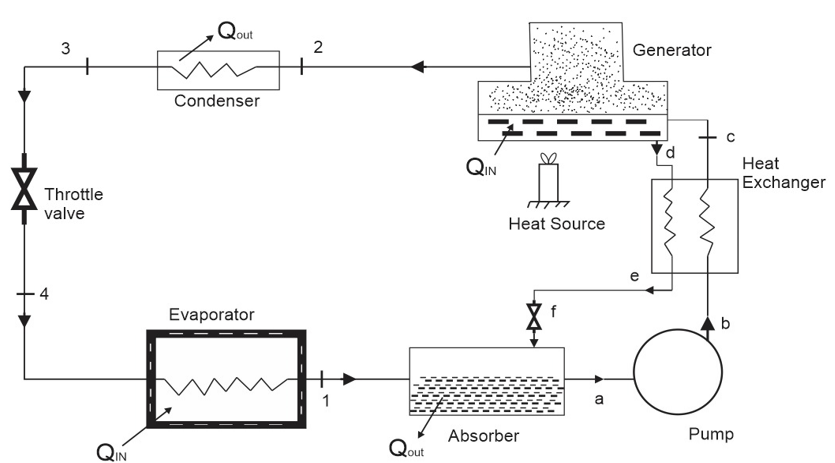Main Article Content
Abstract
Vapour absorption is an attractive method of utilizing low grade energy directly for cooling. This work attempts to develop a kerosene-powered vapour absorption refrigerator for domestic refrigeration applications. It is designed to comprise five major components: evaporator, absorber, generator, pump and condenser and their capacities were determined to be 80W, 350W, 180W, 20W and 90W respectively. The refrigerator is a medium-size one and is designed for domestic purposes only. It uses ammonia and water as primary and secondary working fluids. Parts were designed, fabricated and assembled accordingly. Finally, the performance test was carried out and the refrigerator was able to achieve an evaporative temperature of 7oC and had actual coefficient of performance (COP) of 0.16. It also takes 35 minutes to cool 1litre of water at ambient temperature to 0oC. The operating temperature of the refrigerator is between 7oC to 43oC. General energy equation of the refrigerator gave 875.237KJ.
Keywords
Article Details
References
- Osta-Omar, S. M. and Micallef, C. (2016). Mathematical model of a lithium-bromide/water absorptionrefrigeration
- system equipped with an adiabatic absorber. MDPI Journal of Computational Engineering, Vol. 4 (4), pp.4.
- https://doi.org/10.3390/computation4040044.
- Chen, W and Wang, J. (2019). Performance analysis of a vapor absorption refrigeration system for
- domestic refrigeration applications. Energy, 162, 694-700.
- Chen, X., Li, Z., & Wang, X. (2018). Thermodynamic analysis of a kerosene-powered vapor absorption refrigeration
- system. Applied Thermal Engineering, 141, 551-560.
- Donald, J. R. and Khandwawala A.I (2014). A comparative study of the effect of variation of inside diameter of
- condenser and mass flow rate on the heat transfer coefficient in a domestic refrigerator, Journal of
- Engineering Research and Applications, 4 (2), 514- 518, 2014.
- Khan, M. A., Alharbi, N. S., Khan, A., Qureshi, M. A. (2019). Design and performance analysis of a
- kerosene-fired vapor absorption refrigerator using ammonia-water system. Energy Conversion and
- Management, 185, 615-623.
- Kim, H (2017). Performance analysis of a vapor absorption refrigeration system using propane as the refrigerant.
- Energy Conversion and Management, 146, 153- 161.
- Liu, Y and Wang, J. (2018). Performance analysis of a vapor absorption refrigeration system for transportation
- refrigeration applications. Applied Energy, 216, 401-408.
- Mukhopadhyay, S. (2016). Kerosene-based vapor absorption refrigeration systems: A review. Renewable and
- Sustainable Energy Reviews, 57, 1235-1244.
- Micallef, D and Micallef, C (2010). Mathematical model of a vapour absorption refrigeration unit. International
- Journal of Simulation Model, 9 (2), 86-97.
- Prakash, M, Sai, K, Khaia, S.K, Manoi, A.V (2017). Design of vapour absorption refrigeration system of 1.5TR capacity
- by waste heat recovery process. International Journal of Pure and Applied Mathematics Volume 115 No. 7,
- -619 ISSN: 1311-8080 (printed version); ISSN: 1314-3395.
- Pan, X and Wang, J. (2018). Performance analysis of vapor absorption refrigeration system using waste heat from
- an industrial process. Applied Thermal Engineering, 137, 789-797.
- Patel, R and Modi, H. (2020). Performance analysis of vapor absorption refrigeration system for hydrogen
- production by electrolysis. International Journal of Hydrogen Energy, 45(44), 24793- 24805.
